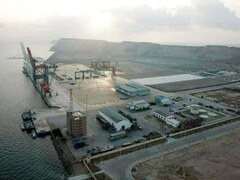 WASHINGTON: A stash of buried bones in Brazil has allowed scientists to identify a new species of flying dinosaur that soared in the skies 66 to 100 million years ago, a study said Wednesday.
WASHINGTON: A stash of buried bones in Brazil has allowed scientists to identify a new species of flying dinosaur that soared in the skies 66 to 100 million years ago, a study said Wednesday.
The remains of at least 47 individual flying reptiles were found in an old lake deposit on the outskirts of Cruzeiro do Oeste in the southern state of Parana.
Named Caiuajara dobruskii, the pterosaurs are the first to be found so far south in the country, said the study in PLOS ONE.
Until now, all the pterosaur remains in Brazil had been uncovered in the nation's northeast. Other pterosaurs have been found worldwide, mainly in old coastal areas.
Most of them were believed to be young when they died, suggesting the species was gregarious and enjoyed traveling in flocks, said the study.
Their wings spanned between 0.65 and 2.35 meters (two to eight feet). The site contained hundreds of bones in an area of less than 20 square meters (215 square feet), dating back to the Upper Cretaceous period.
"The causes of death remain unknown, although similarities with dinosaur drought-related mortality are striking," said the study led by Paulo Manzig from Universidade do Contestado, Brazil.
"However, it is also possible that desert storms could have been responsible for the occasional demise of these pterosaurs."





















Comments
Comments are closed.